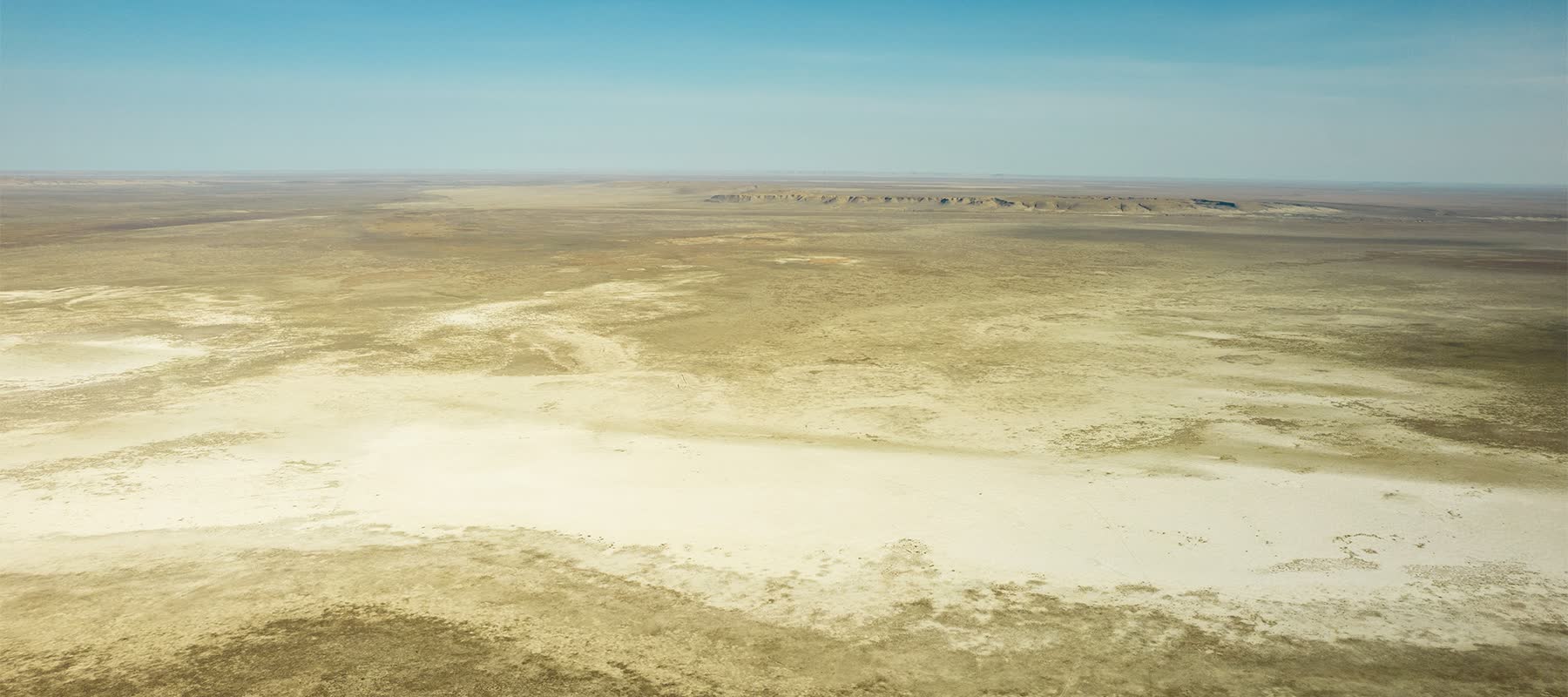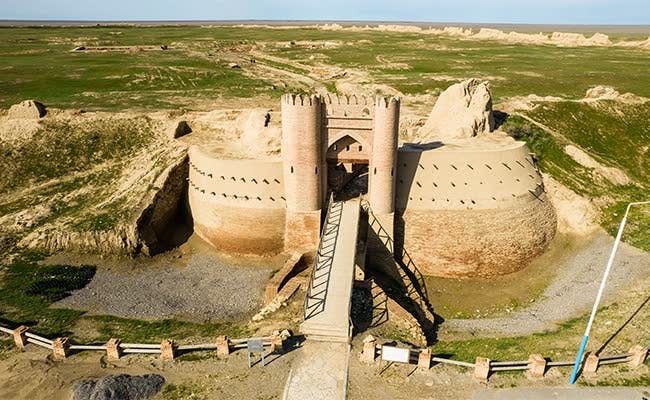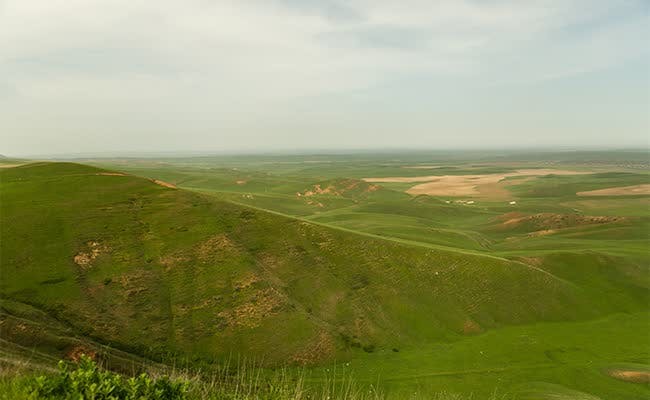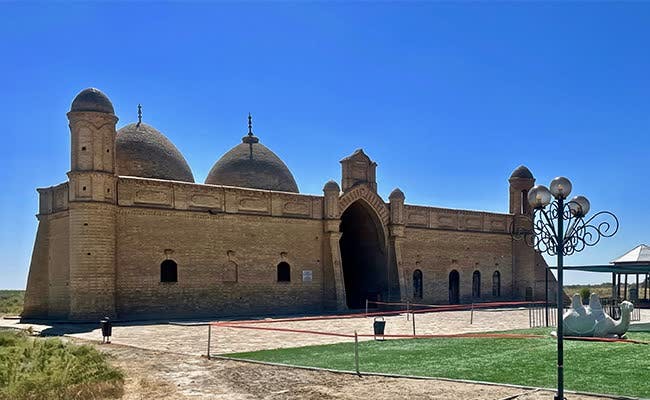The Aral Karakum desert
The climate in the Aral Karakum desert experiences distinct seasons, with both harsh winters and hot summers.
Here are the climatic characteristics of the region:

Winter (Mid-November to Mid-March):
- The winter season in the Aral Karakum spans from mid-November to mid-March.
- During this period, the region often sees varying cloud cover and frequent fog.
- Daytime temperatures typically range from -5 to 10 degrees Celsius (23 to 50 degrees Fahrenheit), while nighttime temperatures drop to around -25 degrees Celsius (-13 degrees Fahrenheit).
- The lowest recorded temperature in the desert has been as cold as -42 degrees Celsius (-44 degrees Fahrenheit).
- It's worth noting that, despite the overall cold conditions, milder weather can occasionally occur during the winter.
- Precipitation, in the form of snow, is most common in the winter months.
- Snow cover in the desert usually measures around 15 centimeters (5.9 inches) deep, but it can reach depths of up to 30 centimeters (12 inches).
Summer (May to Mid-September):
- The summer season in the Aral Karakum lasts from May to mid-September.
- Daytime temperatures in the summer typically range from 30 to 35 degrees Celsius (86 to 95 degrees Fahrenheit), with occasional temperatures soaring as high as 43 degrees Celsius (109 degrees Fahrenheit).
- Nighttime temperatures during the summer months are more moderate, dropping to around 15 to 18 degrees Celsius (59 to 64 degrees Fahrenheit).
- Dry winds and dust storms are relatively common features of the summer weather in the region.
Vegetation and Land Use:
- Despite its arid climate, the Aral Karakum does support some vegetation, primarily consisting of grasses.
- The desert is used for grazing, particularly for sheep, which can find sustenance in the sparse vegetation.
The climatic extremes and seasonal variations in the Aral Karakum, from the frigid winters to the scorching summers, present a challenging environment. However, the presence of some vegetation and its use for grazing demonstrate the adaptability of life in this region.
The Aral Karakum is a desert located in Kazakhstan, situated to the northeast of the Aral Sea. It is bounded by the Syr Darya river to the south and covers an expansive area of approximately 40,000 square kilometers (15,000 square miles).
The landscape in this region is predominantly flat, with elevations ranging from 55 to 118 meters above sea level (AMSL). Within the desert, one can find sand dunes that reach impressive heights of about 25 meters.
The Aral Karakum is characterized by its arid climate, and the area is particularly dry. Typically, the riverbeds in the region are devoid of water flow, only filling with water during the spring when the winter snow melts. The annual precipitation in this desert is minimal, measuring around 120 millimeters (4.7 inches) on average.
The Aral Karakum's flat, arid landscape and towering sand dunes create a unique and challenging environment, with limited water sources and a scarcity of vegetation.
RELATED DESTINATIONS
Sauran, also spelled as Sauran City or Sauran Fortress, is an ancient archaeological site located in southern Kazakhstan. It is one of the most notable historical and cultural landmarks in the region and provides insights into the history of this area.
Sayram-Ugam National Park is a protected area located in the western part of Kazakhstan. Sayram-Ugam National Park is situated in the southern part of Kazakhstan, near the border with Uzbekistan. It covers an area of approximately 650,000 hectares.
The Mausoleum of Arystan Bab, also known as the Mausoleum of Arystan Bab Alash, is an important religious and cultural site located in Kazakhstan.


